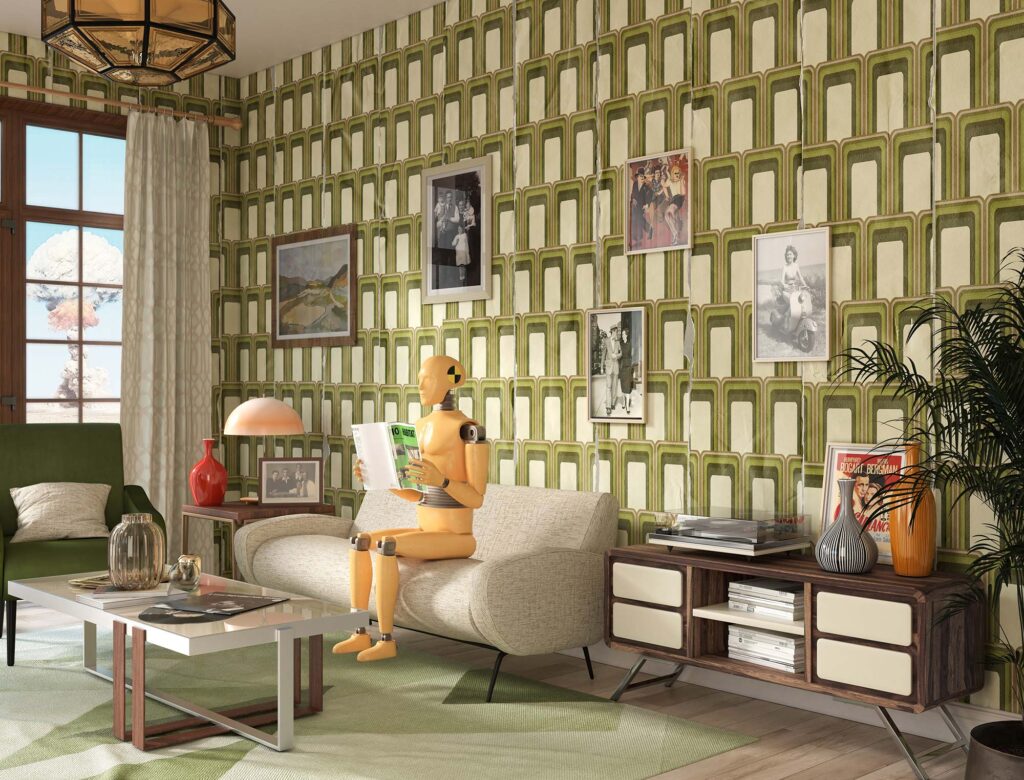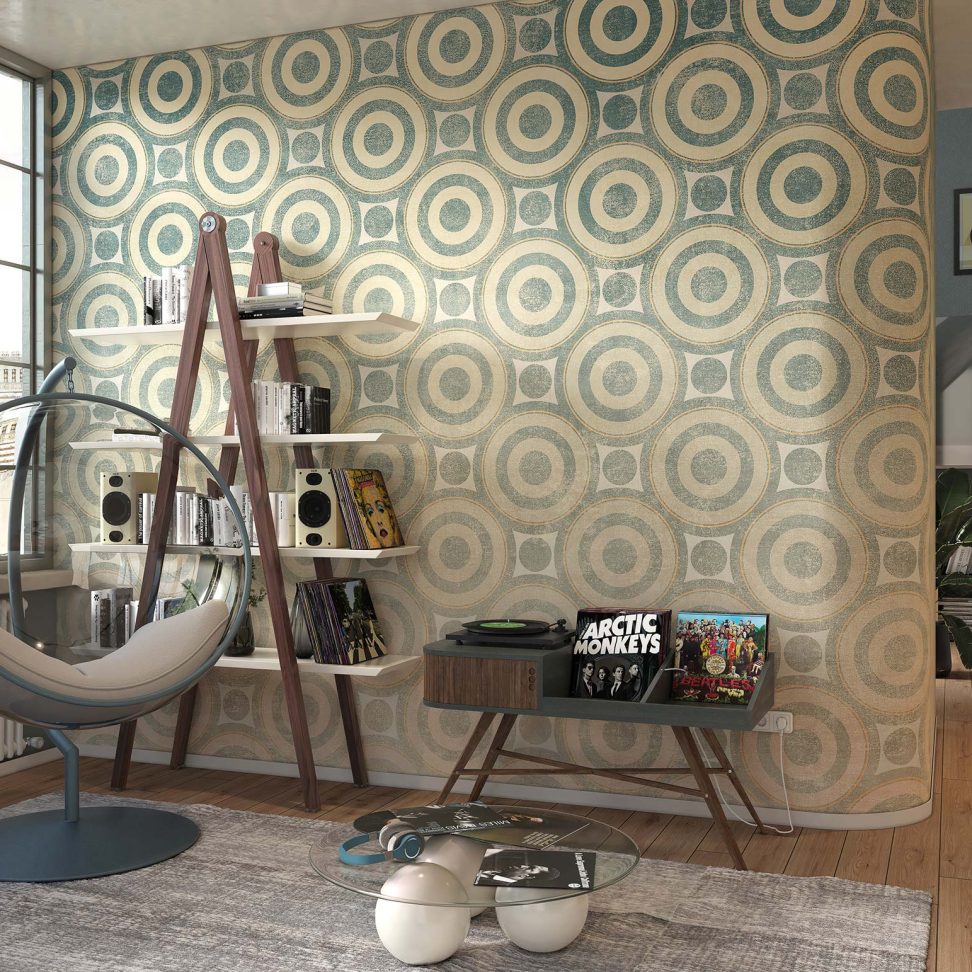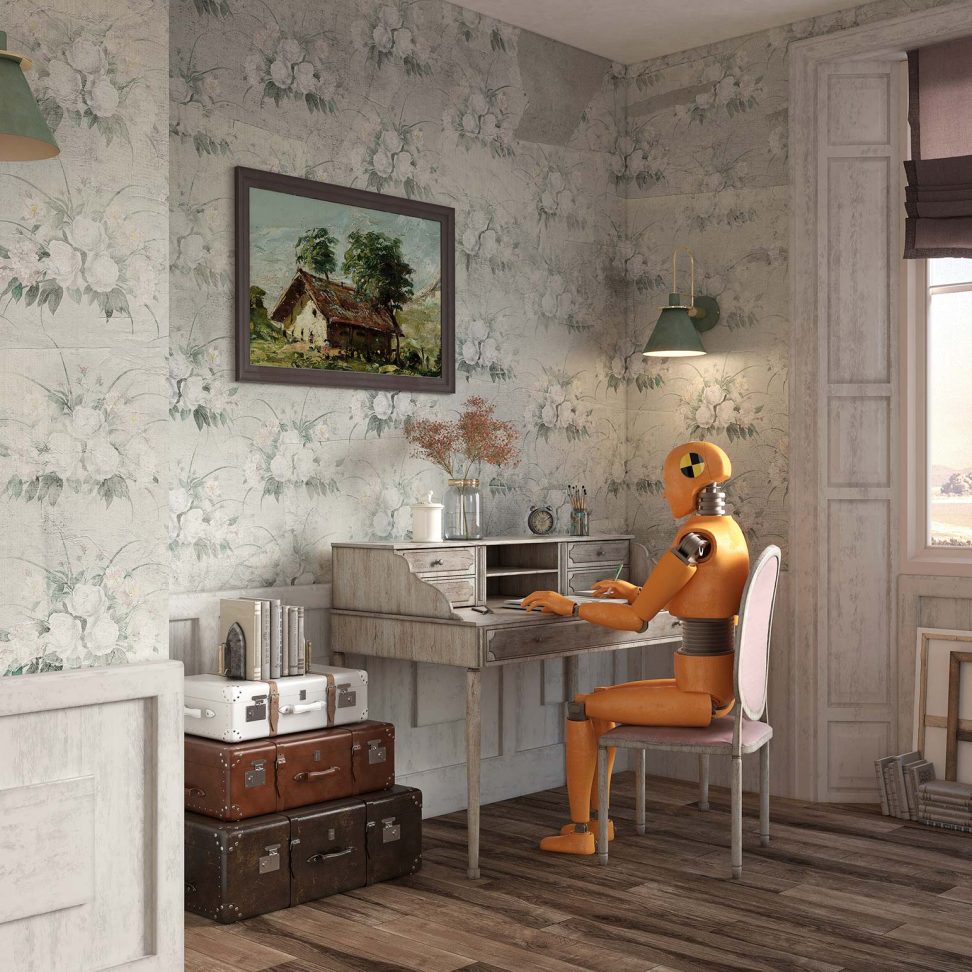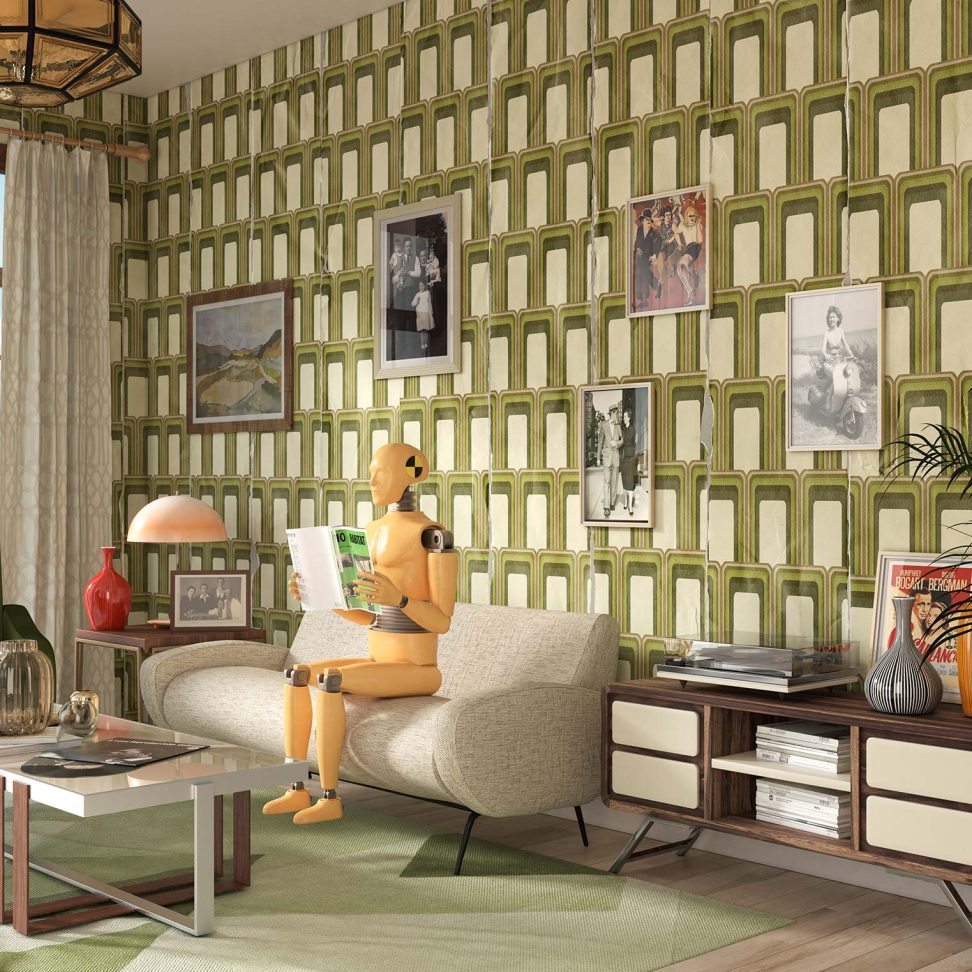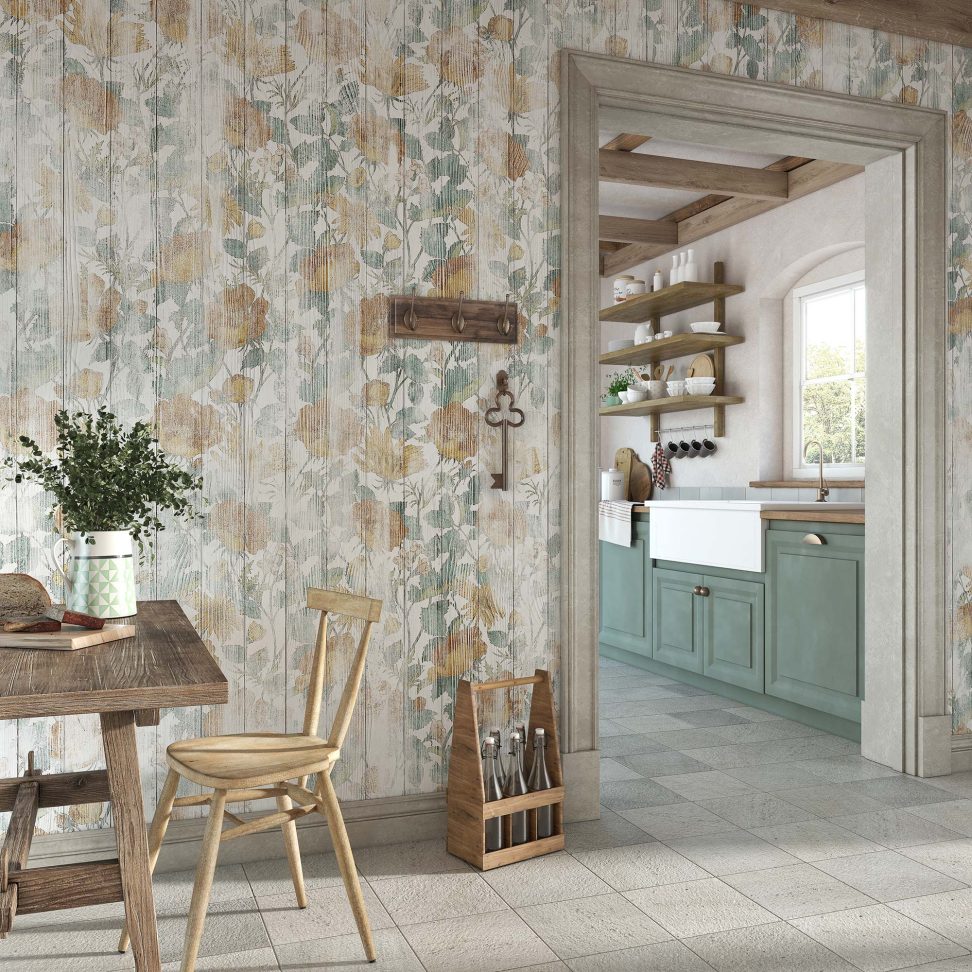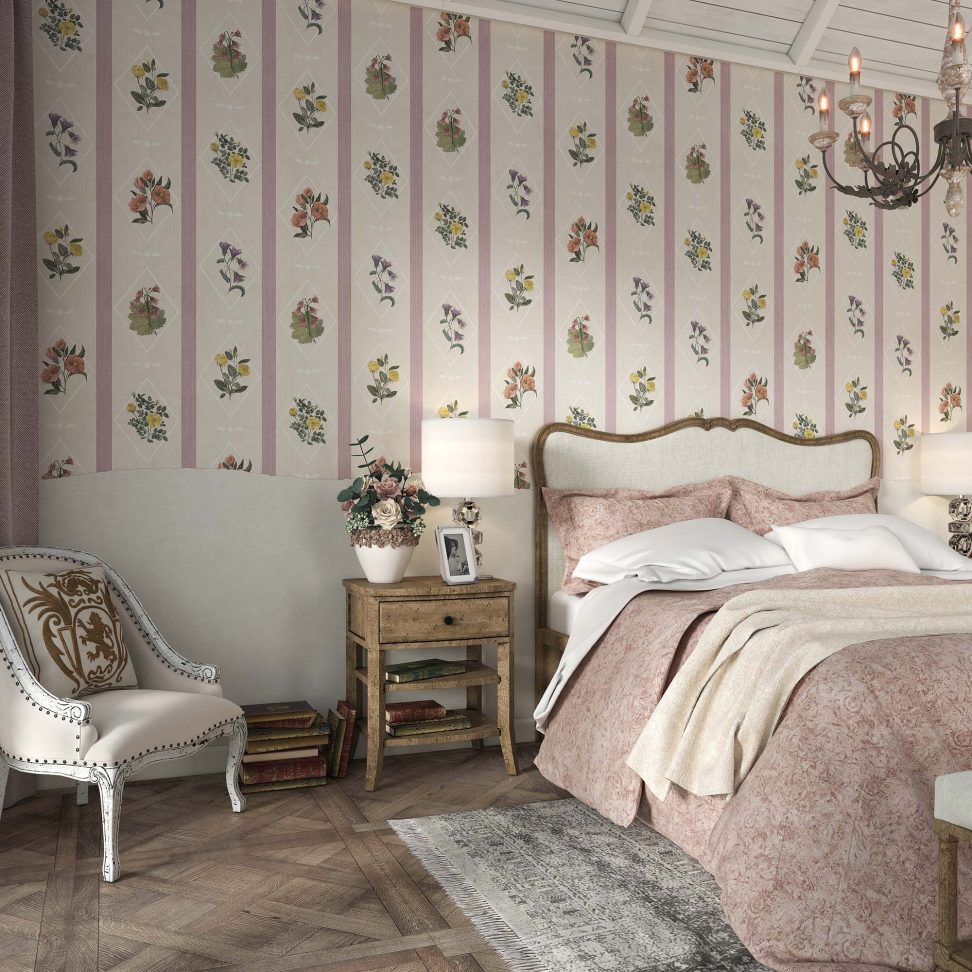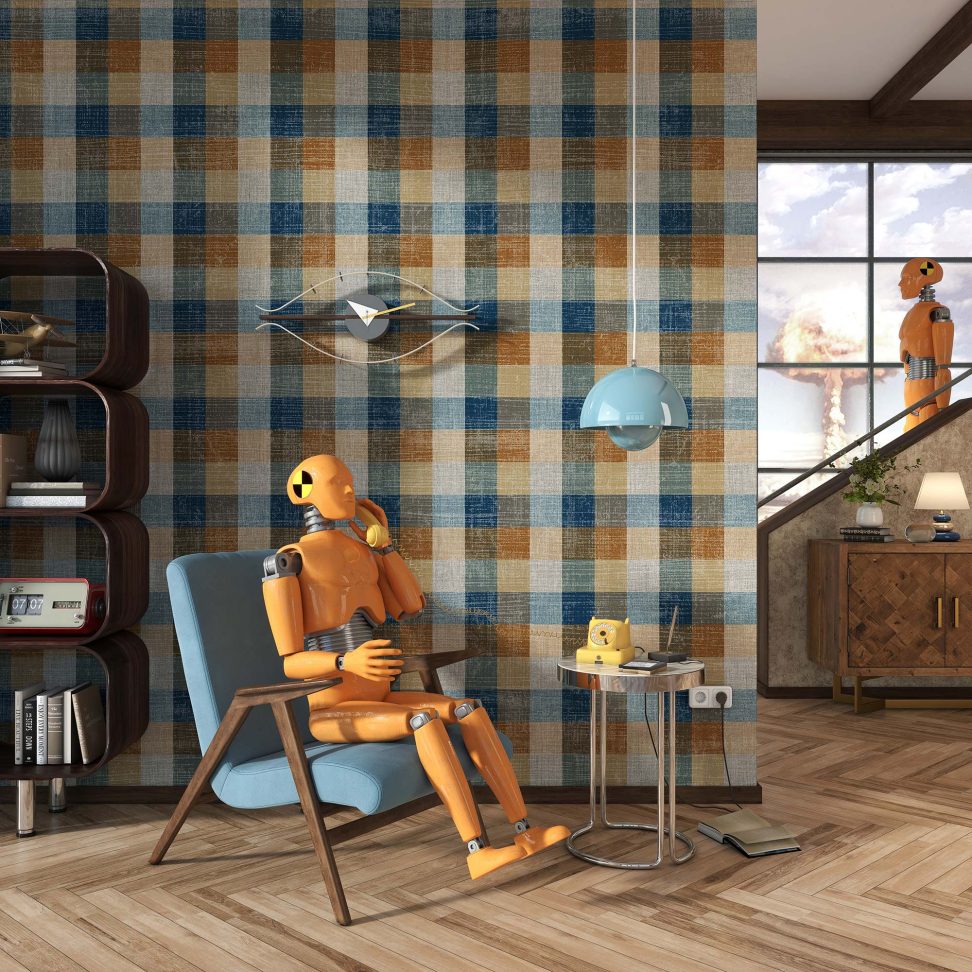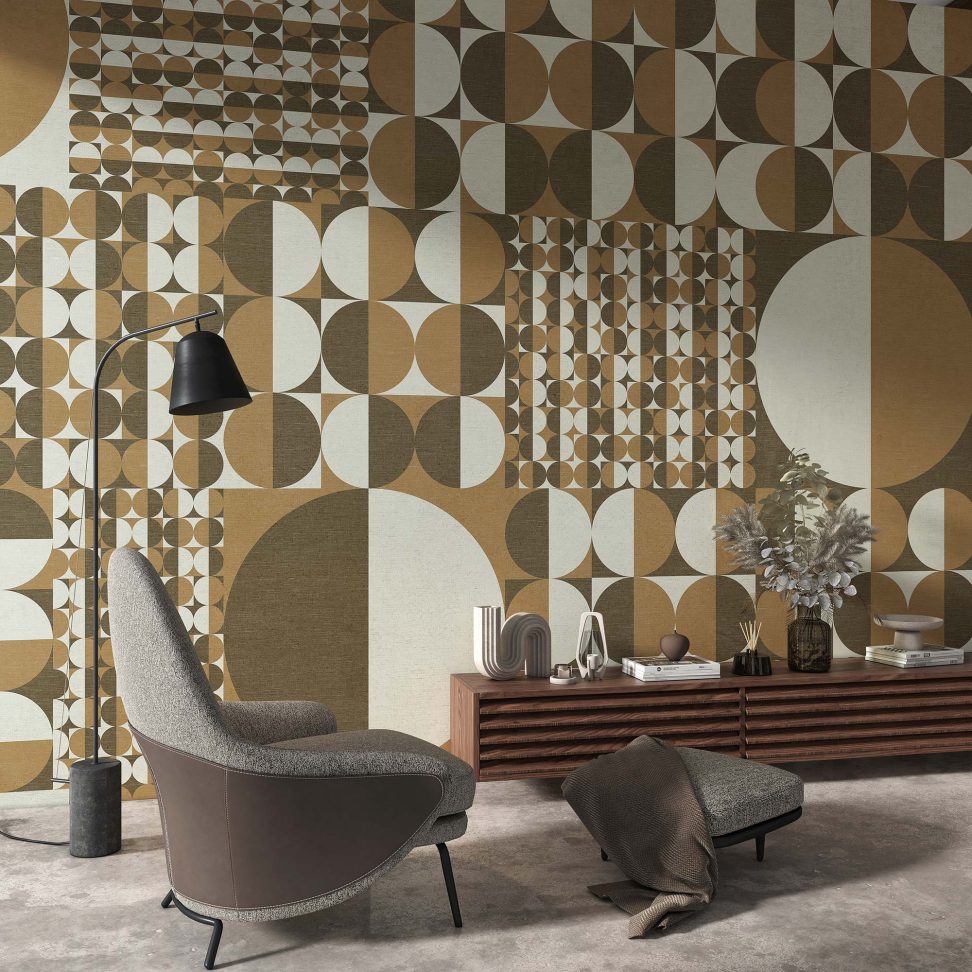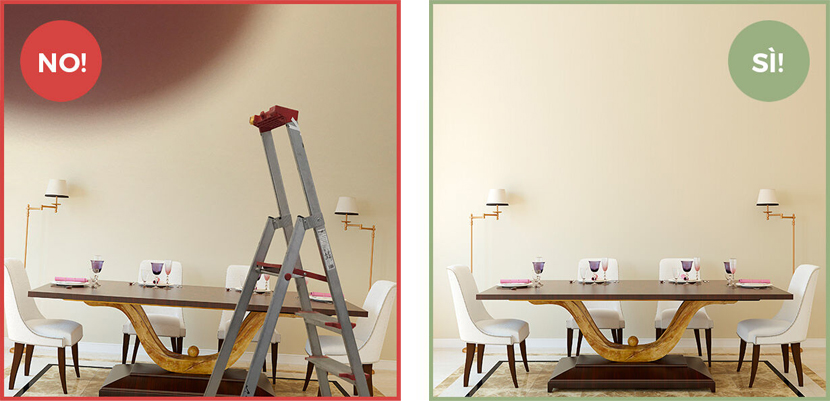Wall decor is an essential aesthetic which distinguishes human civilization since prehistoric times. Throughout centuries there have been numerous techniques, according to the historical period and the technologies available.
Of course, among these, wallpaper can also be found. These became less expensive and more easily achievable compared to classic tapestries. The concept of wallpaper, as we know it today, initiated in 18th century France through complex craftsmanship; whilst the industrial techniques of the 19th century made it even more accessible. In Europe, starting from the post-World War II it begins to spread on a larger scale. The decor started being reproduced in patterns on rolls thanks to special wooden molds, carved with industrial machinery depending on the initial design. The paint was applied on the molds and the colors were gradually imprinted on the paper, creating the different shades of the original design.
Starting from the 1950s, wallpaper became an overwhelming fashion, which beautified millions of homes and public places in European and American countries. These are the decades of the bright colors in the rooms and the dark years of the Cold War, the sensational economic revival, and the terrifying nuclear tests.
Tecnografica traces history with Mid-Century, a wallpaper collection that deliberately recalls the patterns in the style of the 50s, 60s and 70s, adding however some fundamental graphic details which at the time would not have been achievable. Between the classic floral and geometric patterns, digital printing allows color shading, tearing and overlapping of images.
Discover all the vintage designs from the Mid-Century collection signed by Tecnografica.

